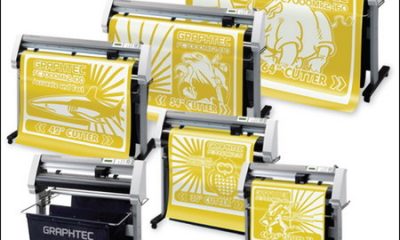The design perspective: Environmental-graphic design (EGD) practitioners play a key role in material-selection process. For some projects, they serve as intermediaries between general contractors or architects and sign fabricators. In other cases, they work in concert with the client and/or fabricator to develop a template.
Architects have endeavored to create structures that promote energy conservation and use renewable materials, which has impacted EGD. The LEED certification program, which the United States Green Building Council initiated to promote environmentally friendly architectural design, construction and operation, set an important standard for many in this field. To meet certification requirements, the structure must earn sufficient LEED credits that address six established criteria: sustainable sites; water efficiency; energy and atmosphere conservation, materials and resources, indoor environmental quality; and innovation and design process.
Although signage comprises a relatively nominal portion of a new building’s environmental footprint – the recycled content, energy efficiency or VOC emissions a few hundred square feet of to signage, wayfinding and ID placards entail pale in comparison to the tons of metal and glass used in building construction – a few EGD firms are taking LEED certification goals into consideration for their client’s projects.
Two Twelve Assoc., a New York City-based EGD firm, has vigorously pursued sustainable graphics. Sarah Haun, Two Twelve’s director of marketing, said education is vital to increasing demand and availability for signage and graphics that minimize environmental footprints.
The firm developed a sustainability checklist, which stipulates specific green design recommendations, which include:
• Materials must be obtained and signage must be fabricated within 500 miles of the site (per LEED guidelines);
Advertisement
• Use of high-recycled content aluminum or steel, or recyclable materials such as composite plastic or polycarbonate;
• Low- or no-VOC finishing or printing;
• Using materials compatible with the project’s anticipated lifespan; and
• Verifying energy-efficient production processes.
For a recent Society for Environmental Graphic Design conference presentation, Two Twelve collaborated with Visual Graphic Systems, also of New York City, to develop sign prototypes that used environmentally friendly materials to explore the signage feasibility. Evaluated materials included PaperStone™, a phenolic-coated, fiber composite that contains 100% post-consumer-recycled content bonded by non-petroleum phenols; 3Form’s Ecoresin™ plastic sheets made from 40% post-industrial, reclaimed polyethylene glycol; and Plyboo, a bamboo-laminate sheet material, designed for architectural applications that meets LEED standards (because bamboo can be rapidly reproduced and it implements a low-VOC adhesive).


 Photo Gallery1 week ago
Photo Gallery1 week ago
 Ask Signs of the Times2 weeks ago
Ask Signs of the Times2 weeks ago
 Paula Fargo1 week ago
Paula Fargo1 week ago
 Real Deal4 days ago
Real Deal4 days ago
 Photo Gallery1 week ago
Photo Gallery1 week ago
 Women in Signs2 weeks ago
Women in Signs2 weeks ago
 Women in Signs1 week ago
Women in Signs1 week ago
 Signs of the Times1 week ago
Signs of the Times1 week ago












